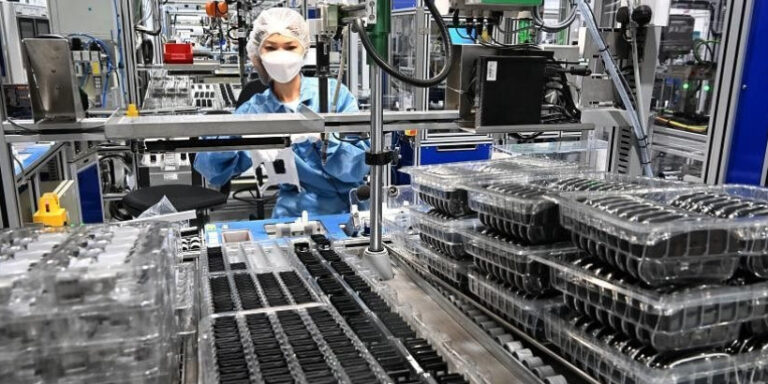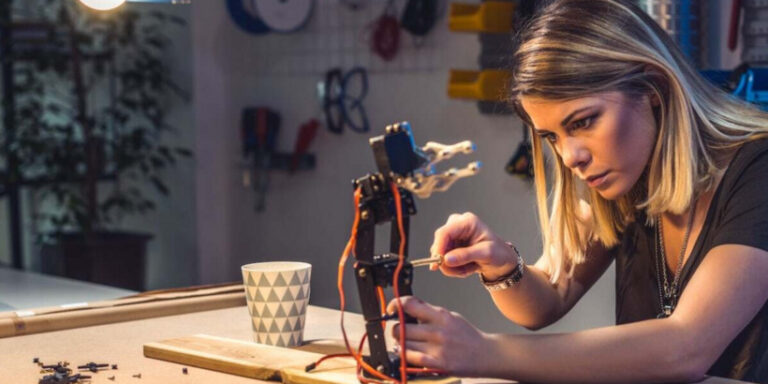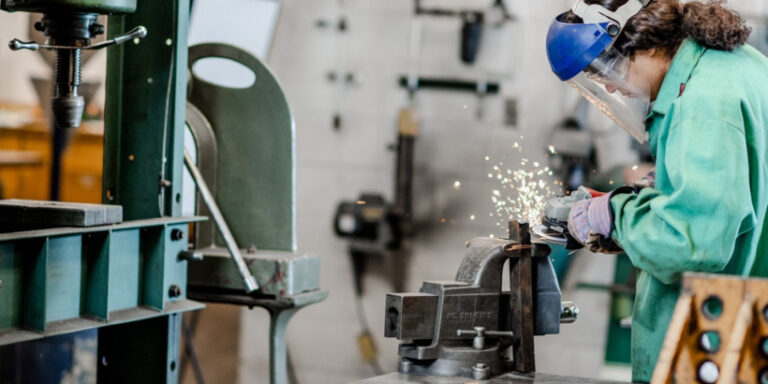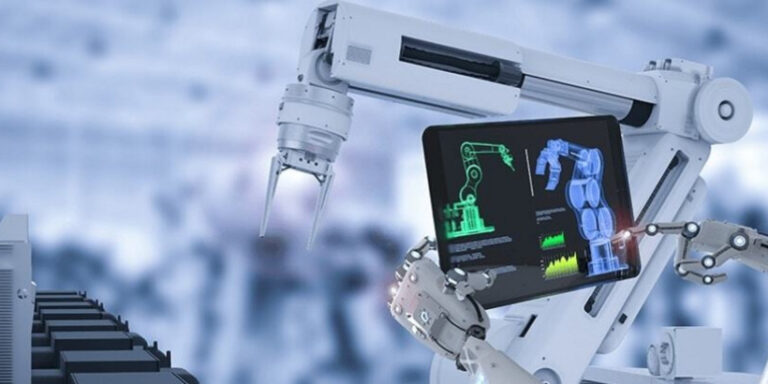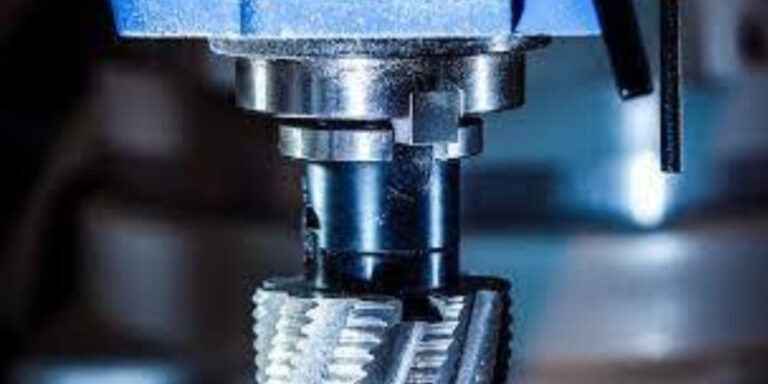The Impact Of The Internet Of Things (Iot) On Mechanical Engineering
As a mechanical engineer, I have seen firsthand the impact of technology on our profession. One of the most significant advancements in recent years has been the Internet of Things (IoT).
The IoT refers to the interconnected network of devices and sensors that communicate with each other over the internet, creating a wealth of data and insights that can be used to improve efficiency and productivity.
In this article, we will explore how the IoT is transforming mechanical engineering. From smart factories to connected cars, we will examine some of the ways in which engineers are leveraging this technology to create innovative solutions for complex challenges.
Whether you’re a seasoned professional or just starting out in your career, understanding the impact of IoT on mechanical engineering is essential for staying ahead of the curve and driving growth in today’s fast-paced digital economy.
So let’s dive in!
Automated Manufacturing
As a mechanical engineer, the internet of things (IoT) has opened up new possibilities for automated manufacturing.
It’s like having an orchestra where each instrument plays its part seamlessly to make beautiful music.
Advanced monitoring capabilities allow me to keep track of every aspect of the production process in real-time.
With IoT-enabled sensors and devices, I can monitor equipment performance, inventory levels, energy consumption, and other critical metrics.
This means that I have immediate access to data-driven insights that help me optimize processes and improve efficiency across the board.
Real-time analytics give me the power to spot patterns and identify potential bottlenecks before they become major issues.
The result is a more streamlined operation that produces higher quality products at lower costs without sacrificing safety or sustainability.
Predictive Maintenance
As we discussed in the previous section, automated manufacturing is a game-changer for mechanical engineering. But with the rise of the Internet of Things (IoT), it’s not just about automation anymore.
Intelligent monitoring and cloud-based analytics are transforming traditional maintenance practices into predictive maintenance. With IoT sensors embedded throughout machines and equipment, engineers can collect real-time data on performance, usage patterns, and potential issues.
This information is then sent to a cloud-based platform where advanced algorithms analyze the data and provide recommendations for maintenance before any problems occur. By implementing this technology, companies can significantly reduce downtime, increase efficiency, and save money on unnecessary repairs or replacements.
It’s amazing how far we’ve come with modern technology!
Connected Cars
As we continue to explore the impact of IoT on mechanical engineering, it’s impossible not to bring up connected cars.
When I think about connected cars, I imagine a futuristic world where vehicles are seamlessly integrated into our lives and surroundings.
It’s amazing how much technology has evolved in recent years, allowing us to have access to real-time data from our cars and connecting them with other devices through connected infrastructure.
With virtual diagnostics, we can identify issues before they become bigger problems and even remotely control certain features of the car.
The integration of IoT in automobiles is undoubtedly changing the way we drive and interact with our vehicles.
Wearable Technologies
Nowadays, wearable technologies are one of the most fascinating applications of IoT in mechanical engineering. These devices can be integrated with sensors and data analytics tools to provide real-time insights into various aspects such as health, performance, safety, and productivity. One of the most significant advantages of wearable tech is that it allows for more accurate monitoring and control over physical activities without interfering with other tasks or causing discomfort.
Additionally, augmented reality (AR) and virtual simulations technology have been rapidly evolving in recent years, making it possible to create immersive experiences that enable engineers to visualize complex designs and identify potential issues before they arise. With these advancements, wearables will continue to play an essential role in bridging the gap between humans and machines by providing a seamless integration between the two worlds.
As we move forward into this exciting new era where everything around us is connected through IoT, there is no doubt that wearable tech will become increasingly prevalent in our daily lives. From tracking personal fitness goals to assisting workers on construction sites or factory floors, these devices are transforming how we interact with our environment.
And as AR and virtual simulation technologies continue to mature, we can expect even greater innovation from this field in the coming years.
Smart Factories
I’m really interested in the impact of the Internet of Things on mechanical engineering, especially in the context of Smart Factories. Automation of manufacturing processes is a great example of this: IoT technology can help increase efficiency by automating complex, time-consuming tasks. Predictive maintenance is another great application of IoT in Smart Factories. It can help identify potential issues before they become full-blown problems, saving time and money. Last but not least, Machine Learning applications are proving to be incredibly useful in Smart Factories. By leveraging AI, they can do things like optimize production schedules and reduce waste.
Automation Of Manufacturing Processes
Imagine walking into a factory where machines are running smoothly and efficiently without any human intervention. Smart factories make this possible through the automation of manufacturing processes, which is one of the many benefits of the internet of things (IoT) in mechanical engineering.
Real time monitoring allows for immediate detection of issues, while cloud-based analytics provide valuable insights that enable manufacturers to optimize their processes even further. With IoT-enabled devices communicating with each other seamlessly, errors can be addressed before they affect production output or quality.
As a result, smart factories reduce downtime, increase productivity, and enhance product quality¡ªall while saving costs on labor and maintenance expenses.
Predictive Maintenance
Now, let’s delve deeper into one of the most crucial aspects of smart factories: predictive maintenance.
As I mentioned earlier, real time monitoring is a key feature of IoT-enabled devices in manufacturing processes. However, it’s not just about detecting issues as they happen – predictive analytics takes things to the next level by using data to anticipate potential problems before they occur.
By analyzing historical data and identifying patterns, manufacturers can schedule maintenance proactively instead of reacting to breakdowns and costly repairs. This approach not only saves money but also ensures that machines operate at optimal levels for longer periods, maximizing productivity and minimizing downtime.
Machine Learning Applications
Now that we’ve explored the importance of predictive maintenance in smart factories, let’s shift our focus to another critical aspect: machine learning applications.
With the rise of AI and cloud-based technologies, manufacturers can optimize their processes even further by harnessing data-driven insights.
However, as with any emerging technology, it’s essential to consider AI ethics before implementing these solutions.
By leveraging machine learning algorithms for tasks like quality control and optimization, companies can ensure they are operating at peak efficiency while also upholding ethical standards.
Plus, with cloud-based AI, businesses can access powerful analytics tools without investing heavily in hardware or IT infrastructure.
Ultimately, these advancements enable manufacturers to take their operations to new levels of productivity and innovation.
Data-Driven Design
As a mechanical engineer, the impact of the Internet of Things (IoT) on our industry has been tremendous. With remote monitoring and data collection capabilities, we can now track the performance of machines and equipment in real-time, allowing for preventative maintenance and quicker response times to issues. This shift towards data-driven design has also opened up new opportunities for innovation with 3D printing technology. Using digital models generated from IoT data, engineers can create custom parts that are tailored to specific needs and optimize designs based on actual usage patterns. Check out this table below showcasing some ways IoT is transforming mechanical engineering:
| Ways IoT Transforms Mechanical Engineering | Examples |
|---|---|
| Remote Monitoring | Tracking machine performance in real-time for predictive maintenance |
| Data-Driven Design | Using analytics to inform product development decisions |
| Enhanced Efficiency | Optimizing energy consumption through smart building systems |
| Improved Safety | Implementing safety sensors and protocols for hazardous environments |
The possibilities are endless when it comes to how these technologies will continue to shape mechanical engineering in the future. The ability to gather and analyze large amounts of data opens doors for even more advanced applications such as AI-powered optimization algorithms or virtual simulations. As an engineer, I am excited about the ongoing transformation that IoT brings to our field and look forward to contributing my skills towards its continued growth.
Robotics And Automation
Oh boy, let’s talk about robotics and automation. The internet of things has revolutionized the way we think about machines and their capabilities. Gone are the days when robots were only seen in sci-fi movies or manufacturing plants. Now, they’re everywhere – from delivering food to your doorstep to performing complicated surgeries in hospitals. And it’s all thanks to AI driven design and machine learning algorithms that have made these robots smarter than ever before.
But what does this mean for mechanical engineering? Well, firstly, it means that engineers need to be up-to-date with the latest technology advancements if they want to keep pace with the industry.
Secondly, it means that there will be a greater demand for engineers who specialize in robotics and automation.
And lastly, it means that there is no limit to what can be achieved in this field – as long as you have a little bit of creativity and innovation on your side.
So buckle up, because the future of mechanical engineering looks bright indeed! With AI driven design and machine learning algorithms leading the charge towards more efficient and effective systems, we can look forward to a world where anything is possible.
Whether you’re interested in designing intelligent machines or simply fascinated by the possibilities of automation, one thing is clear: the sky’s the limit when it comes to IoT-powered technologies.
So get ready for an exciting ride into the future of mechanical engineering!
Conclusion
In conclusion, it’s safe to say that the internet of things (IoT) has revolutionized mechanical engineering in ways we never thought possible. Who would have guessed that our fridges and cars could connect to the internet and communicate with other devices?
Ironically, as much as IoT has transformed mechanical engineering, it has also made us realize how much more work needs to be done. The potential for automation is limitless, but so are the risks associated with data breaches and cyber attacks.
Despite these challenges, I remain optimistic about the future of mechanical engineering thanks to IoT. Wearable technologies will continue to improve safety in hazardous environments like construction sites while smart factories will increase efficiency and productivity.
In summary, while there is still a lot of ground to cover when it comes to implementing IoT in mechanical engineering, I believe that this technology holds great promise for improving our lives in countless ways.


